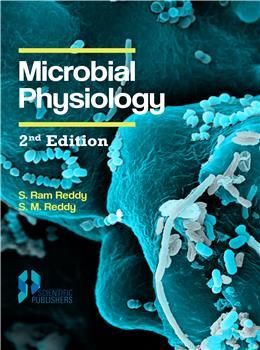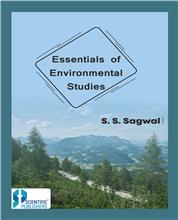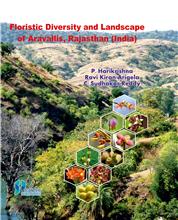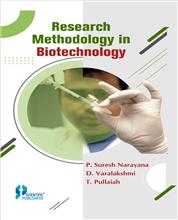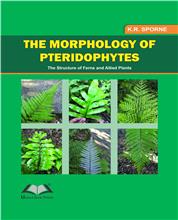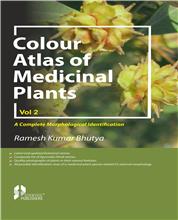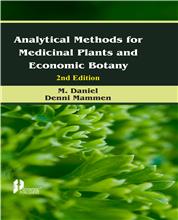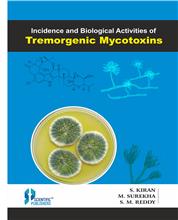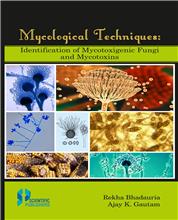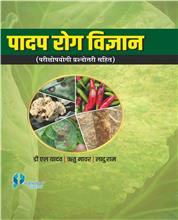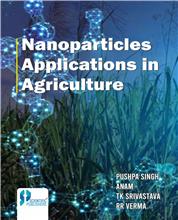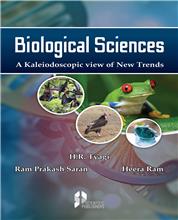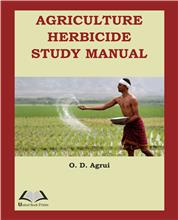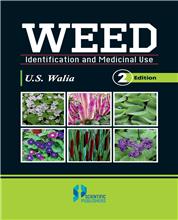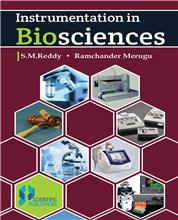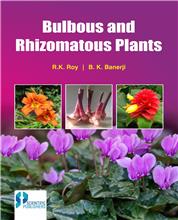Preface (2nd Ed.)
Preface
1. Cell Structure and
Function
1.1. Introduction
1.2. Prokaryotes vs. Eukaryotes
1.3. Prokaryotic Cell Structure
1.4. Further Reading
2. Cell Wall and its
Biosynthesis
2.1. Introduction
2.2. Types of Cell Walls
2.3. Peptidoglycan
2.4. Gram-Positive Cell Wall
2.5. Gram-Negative Cell Wall
2.6. Archaeal Cell Wall
2.7. Protoplasts and Spheroplasts
2.8. Synthesis of Gram-Positive Wall
2.9. Synthesis of Gram-Negative Cell Wall
2.10. Exopolysaccharides
2.11. Further Reading
3. Cell Metabolism — An
Overview
3.1. Metabolism
3.2. Role of Central Metabolic Pathways in Metabolism
4. Principles of
Bioenergetics
4.1. Introduction
4.2. Laws of Thermodynamics
4.3. Coupled Reactions
4.4. Transport of Energy: The Role of ATP and other Energy
Rich Molecules
4.5. Oxidation-Reduction Reactions
4.6. Transduction of Energy
4.7. Chemiosmotic Theory
4.8. ATP Synthesis
4.9. Mechanism of ATP Synthesis
4.10. Bioenergetics in Cytosol
4.1 1. Energy Rich Compounds
4.12. ATP and Cell Yields
4.13. Further Reading
5. Enzymes, Coenzymes
and Cofactors
5.1. Introduction
5.2. Distribution
5.3. Chemistry
5.4. Types of Enzymes
5.5. Nomer1clature
5.6. Classification
5.7. Mechanism of Action
5.8. Properties of Enzymes
5.9. Factors Affecting Enzyme Functions
5.10. Further Reading
6. Microbial
Nutrition
6.1. Introduction
6.2. Composition of Microbial Cell
6.3. Classification of Nutrients
6.4. Culture Media
6.5. Nutritional Classification of Microorganisms
6.6. Uptake and Transport of Nutrients
6.7. Transport of Iron
6.8. Efflux of Substances
6.9. Further Reading
7. Microbial Growth
7.1. Introduction
7.2. Definition
7.3. Growth Curve
7.4. Growth Kinetics
7.5. Synchronous Growth
7.6. Diauxic Growth
7.7. Growth Yields
7.8. Energetics of Growth
7.9. The Continuous Culture
7.10. Balanced and Unbalanced Growth
7.11. Measurement of Microbial Growth
7.12. The Influence of Environmental Factors on Growth
7.13. Microbial Growth in Natural Environment
7.14. Further Reading
8. Homeostasis and
Survival
8.1. Definition
8.2. Maintenance of Constancy of pH
8.3. Maintenance of Constancy of Osmolarity
8.4. The Heat Shock Response
8.5. Starvation and Survival
8.6. Further Reading
9. Phototrophy
9.1. Phototrophy
9.2. Photosynthesis
9.3. Diversity of Phototrophs
9.4. Photosynthetic Pigments
9.5. Physiology of Photosynthesis
9.6. Bacteriorhodopsin and Light Mediated ATP Synthesis
9.7. Halorhodopsin, A Light-Driven Chloride Pump
9.8. Further Reading
10.
Chemolithoautotrophy
10.1. Definition
10.2. Energetics of Chemolithotrophy
10.3. Nitrification - Nitrifiers
10.4. Sulphur Oxidisers
10.5. Iron Bacteria
10.6. Hydrogen Bacteria
10.7. Carboxidobacteria
10.8. Further Reading
11. Chemoheterotrophy
- Acetogens
11.1. Introduction
11.2. Distribution and Taxonomy
11.3. CO2 Metabolism and Acetogenesis
11.4. Further Reading
12. Chemoheterotrophy
- Methanogens
12.1. Introduction
12.2. General Characteristics
12.3. Habitat
12.4. Diversity and Phylogeny
12.5. Physiology
12.6. Economic Importance
12.7. Further Reading
13. Chemoheterotrophy
- Methylotrophs
13.1. Introduction
13.2. Taxonomy and Systematic Position
13.3. Physiology
13.4. Applications of Methylotrophs
13.5. Further Reading
14. Chemoheterotrophy
- Hydrocarbon utilizers
14.1. Introduction
14.2. Oxygenases
14.3. Metabolism of Aliphatic Hydrocarbons
14.4. Metabolism of Aromatic Hydrocarbons
14.5. Hydrocarbon Utilizers and Bioremediation
14.6. Hydrocarbon Utilizers and Oil Exploration
14.7. Further Reading
15. Assimilation of
Complex Carbohydrates and Proteins
15.1. Introduction
15.2. Cellulose
15.3. Hemicellulose
15.4. Starch
15.5. Pectin
15.6. Chitin
15.7. Proteins
15.8. Further Reading
16. Aerobic
Respiration
16.1. Introduction
16.2. Aerobic Respiration
16.3. Glycolysis
16.4. Tricarboxylic Acid Cycle
16.5. Electron Transport and Oxidative Phosphorylation
16.6. The Yield of ATP
16.7. Catabolism of Unusual Carbohydrates
16.8. Catabolism of Organic Acids
16.9. Catabolism of Organic Substrates other than
Carbohydrates
16.10. Further Reading
17. Anaerobic
Respiration
17.1. Definition
17.2. Diversity of Microorganisms
17.3. Electron Transport Chain
17.4. Electron Acceptors and Energy Conservation
17.5. Dissimilatory and Assimilatory Reductions
17.6. Diversity of Respiratory Pathways
17.7. Further Reading
18. Fermentaion
18.1. Introduction
18.2. Definition
18.3. Physiological Significance of Fermentation
18.4. Types of Fermentations
18.5. Pyruvate, a Key Compound in Fermentations
18.6. Fermentation versus Oxygen
18.7. Alcohol Fermentation
18.8. Lactic Acid Fermentation
18.9. Propionate Fermentation
18.10. Mixed Acid Fermentation
18.11. The Butanediol Fermentation
18.12. Butyrate-Butanol Fermentations
18.13. The Ethanol-Acetate Fermentation
18.14. Fermentation of Amino Acids
18.15. Fermentation Balances
18.16. Ruminococcus
Albus: A Model for lnterspecies Hydrogen Transfer : Syntrophy
18.17.Anaerobic Food Chain
18.18. Further Reading
19. Nitrogen
Metabolism – Biological Nitrogen Fixation
19.1. Introduction
19.2. Distribution and Properties of Nitrogen and its
Compounds
19.3. Nitrogen Cycle
19.4. Nitrogen Fixation
19.5. Nitrogen Fixing Microorganisms
19.6. Outlines of Nitrogen Fixation
19.7. Requirements of Nitrogen Fixation
19.8. Mechanism of Nitrogen Fixation
19.9. Further Reading
20. Amino Acid
Metabolism
20.1. Introduction
20.2. Biosynthesis of Amino Acids
20.3. Catabolism of Amino Acids
20.4. Further Reading
21. Nucleotide
Metabolism
21.1. Introduction
21.2. Overview of Nucleotide Biosynthesis
21.3. De Novo Synthesis of Nucleotides
21.4. Salvage Pathway for Synthesis of Nucleotides
21.5. Degradation of Nucleotides
21.6. Further Reading
22. Lipid Metabolism
22.1. Introduction
22.2. Fatty Acids
22.3. Phospholipids and Phosphoglycerides
22.4. Catabolism of Fatty Acids
22.5. Fatty Acids Synthesis vs Degradation
22.6. Further Reading
23. Secondary
Metabolism
23.1. Introduction
23.2. The Concept of Primary and Secondary Metabolites
23.3. Characters of Secondary Metabolites
23.4. The Significance of Secondary Metabolism
23.5. Biosynthetic Pathways of Secondary Metabolism
23.6. Some Important Microbial Secondary Metabolites
23.7. Further Reading
24. Microbial Toxins
24.1. Introduction
A. BACTERIAL TOXINS
24.2. Endotoxins
24.3. Exotoxins
B. BACTERIOCINS
24.4. Bacteriocins vs Antibiotics
24.5. Bacteriocins Produced by Gram-Negative Bacteria
24.6. Bacteriocins of Gram-Positive Bacteria
24.7. Immunity and Resistance of Bacteriocin Producing Cells
24.8. Ecological Role of Bacteriocins
24.9. Applications of Bacteriocins
C. MYCOTOXINS
24.10. Mycotoxins Producing Moulds
24.11. Chemistry of Mycotoxins
24.12. Classification of Mycotoxins
24.13. Mode of Action of Mycotoxins
24.14. Biological Effects
D. PHYCOTOXINS
24.15. Harmful Algal Blooms (HAB) and Phycotoxins
24.16. Classification and Chemical Nature of Phycotoxins
24.17. Phycotoxin Producing Organisms
24.18. Ecological Advantages of Phycotoxins to Producer Organisms
24.19. Mode of Action and Phycotoxins Health Affects
24.20. Prevention and Management of Phycotoxin Poisoning
24.21. Further Reading
25. Antimicrobials - Mode of Action and Resistance
25.1. Introduction
25.2. Terminology
25.3. Mechanisms of Action of Antimicrobial Agents
25.4. Antifungal Agents
25.5. Further Reading
26. Signal
Transduction - Quorum Sensing
A. SIGNAL TRANSDUCTION
26.1. Two Component Signaling System
26.2. One-Component Signal Transduction System
B. QUORUM SENSING
26.3. Auto Inducers or Signal Molecules
26.4. Quorum Sensing in Gram-Negative Bacteria
26.5. Quorum Sensing in Gram-Positive Bacteria
26.6. Competitive Quorum Sensing: Bacillus subtilis Model
26.7. Quorum Quenching
26.8. Practical Applications of Knowledge of Quorum Sensing
and Quorum Quenching
26.9. Further Reading
27. Endospore
Formation
27.1. Introduction
27.2. Endospore Structure
27.3. Endospore Formation
27.4. Endospore Germination
27.5. Further Reading
Glossary
Subject Index
